I sincerely enjoy working with students! I have been appointed as an affiliate assistant professor in OU’s School of Meteorology. Occasionally I have paid research positions, but I also mentor students through programs like the NWC REU or via voluntary research. If you’re interested in the type of research I do and would like to explore student research options, please get in touch. Feel welcome to schedule a time for us to talk.
In my work with students, I aim to be clear about what my expectations are for our time working together. A summary of my expectations can be found here (adapted from Dr. Mary K. Salcedo).
Salcedo, Mary. (2020). Undergraduate Expectations Document – working with Dr. Salcedo. Zenodo. https://doi.org/10.5281/zenodo.4000437
Courses
METR 4603/5603 – Advanced Observations for Lower Atmospheric Research
I developed this class and began offering it at OU in fall 2021. I plan to offer it every other year in the fall.
Current Students
NOAA Lapenta Internship Program 2023:
Choose your own adventure at NSSL: process-based studies of the pre- and near-storm environment and conditions that support it using recent field observations of the lowest levels of the atmosphere
Josh Ostazewski
Texas Tech University
Dept. of Atmospheric Science
Expected Graduation: 2027
Degree: Doctor of Philosophy, Atmospheric Science
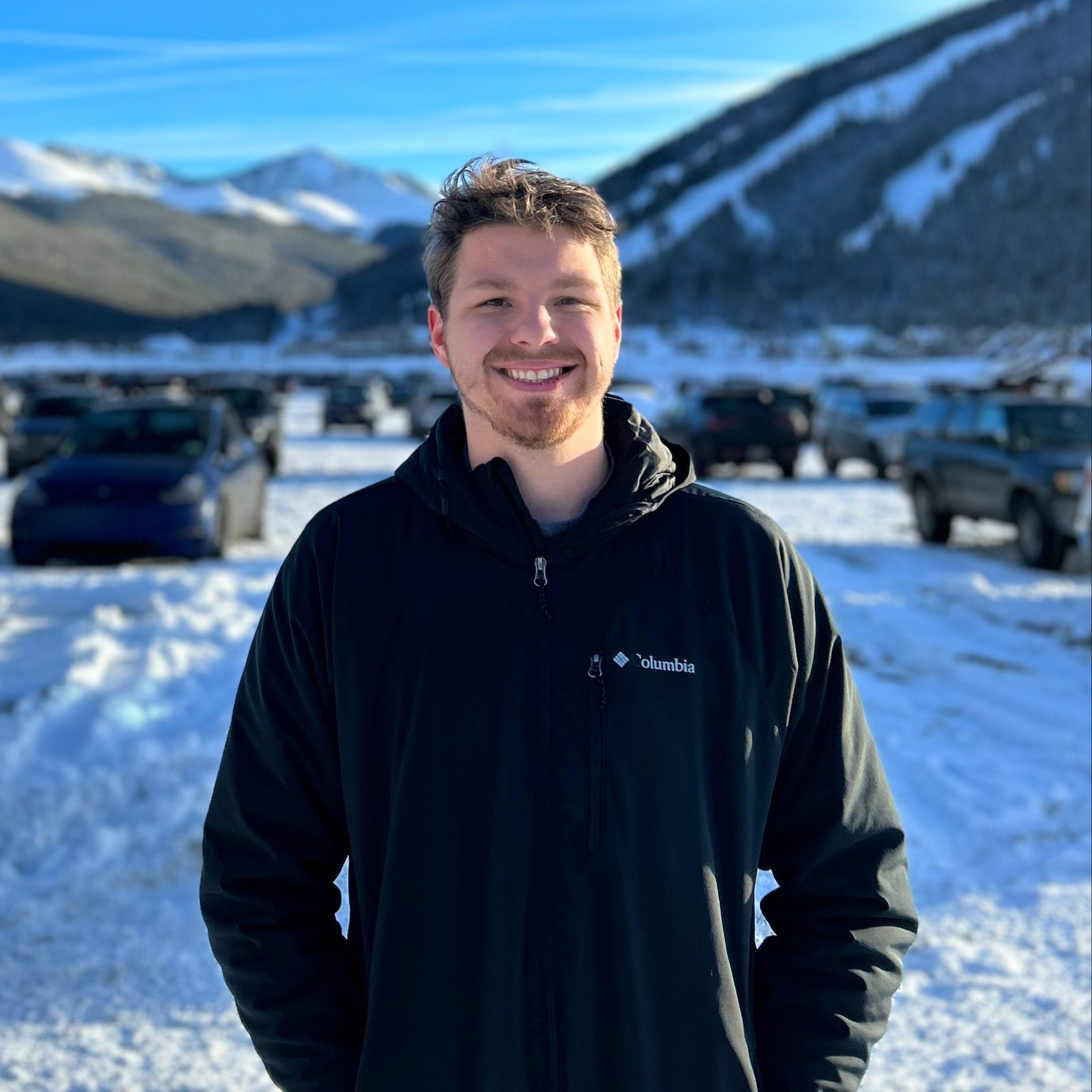
Josh is a Lapenta intern visiting NSSL between his MS and PhD, both undertaken at Texas Tech. Originally from San Antonio, Josh earned a BS in Meteorology at Texas A&M (this is a lot of Texas for someone visiting Oklahoma…). Josh has been part of multiple severe storm field campaigns, including TORUS, MESO 18-19, PERiLS, and TORUS-LItE, where he has operated and maintained research radars and surface in-situ instruments. His research interests are observing and modeling tornadic high-shear/low-CAPE supercells and QLCSs in the Southeast. At NSSL he is diving into the large amount of boundary-layer profile field data we have collected over recent projects to unravel new questions abound near- and pre-storm environments.
Graduate Research 2020-2024:
Boundary layer flow associated with wind energy resources
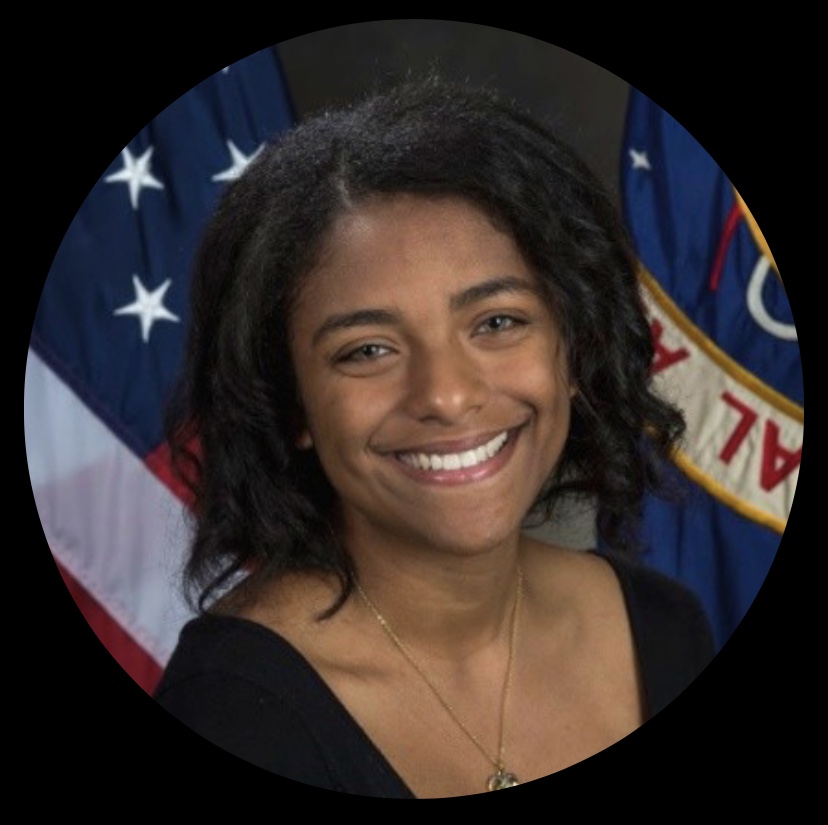
Arianna Jordan
University of Oklahoma
School of Meteorology
Expected Graduation: Late 2024
Degree: Doctor of Philosophy, Meteorology
Arianna earned a Bachelor of Science degree in meteorology from San Jose State University and a Master of Science degree in atmospheric science from Howard University before joining the PhD program at OU. I serve as a co-adviser for Arianna alongside Dr. Petra Klein (OU/SoM/AGS) and scientists from Lawrence Livermore National Laboratory. Arianna’s work will explore boundary layer features and flow in the context of wind energy resources. Learn more about Arianna on her webpage.
Graduate Research 2022-2026:
Exploring Sea Breezes, Convection, and Boundary Layer Processes
Michelle Spencer
University of Oklahoma
School of Meteorology
Expected Graduation: 2026
Degree: Doctor of Philosophy, Meteorology
Michelle also worked with me as an REU student (2019).
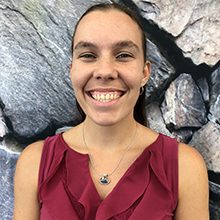
Michelle is co-mentored by Dr. Petra Klein and supported by the TRACER project. She earned her BS at Metropolitan State University and MS at University of Wisconsin–Milwaukee, both in Atmospheric Science. Her PhD work will use boundary layer observations collected during the TRACER project in coastal Houston, TX. She will focus on the interactions between sea breezes, urban boundary layers, boundary layer processes, and convection initiation.
Undergraduate Research 2021-2023:
CLAMPS dataset analysis and development

Victor Alvarez
University of Oklahoma
School of Meteorology
Expected Graduation: May 2024
Major: Meteorology
Victor has worked alongside the CLAMPS dataset team including full time data manager and scientists to develop a new backend for data visualization and a new live webviewer and data archive web tool. The associated new CLAMPS webpage launches in mid-2023.
Undergraduate Research 2021-2023:
Assessing multiyear boundary-layer variability in the southeastern United States
Isaac Medina
University of Oklahoma
School of Meteorology and
School of Aviation
Expected Graduation: 2024
Major: Meteorology
Major: Aviation Management – Air Traffic Management Concentration
Minor: General Business
Isaac also worked with me as an NWC REU student (2021).

Previous Students
Undergraduate Research 2022-2023:
Effects of Terrain Heterogeneity on Boundary-layer Processes that Impact the Evolution of Severe Convection

Matthew Ammon
University of Oklahoma
School of Meteorology
Expected Graduation: May 2023
Major: Meteorology
Matt Ammon worked as an undergraduate research assistant on a project funded by VORTEX-SE/USA and PERiLS related grants. This work extends that of Tyler Pardun (former undergrad) focusing on data exploration and verification of short-term forecast and warning operational tools using ground-based boundary layer profiler data. After his graduation, we continue to collaborate on these datasets and analysis. Matt also signed on to a new project with our group related to uncrewed aircraft and next-generation networks from an OSSE perspective.
NOAA Lapenta Internship Program 2022:
Comparative Analysis of Wind Observations from Doppler Lidar and Radiosondes
Nadiyah Williams
Georgia Tech
Earth and Atmospheric Sciences
Expected Graduation: 2024
Degree: Bachelor of Science, Atmospheric and Ocean Science

Nadiyah completed her program remotely via the NOAA Lapenta student scholars program. Her project compared wind observations from lidar and sonde measurements in the boundary layer in order to evaluate their performance while observing moderate to severe weather conditions and to gain understanding about what each measurement type might represent in these varying conditions. Comparative analysis was performed to assess the relevance of wind observations in different conditions.
Outcomes:
Nadiyah presented her work at the 2023 AMS meeting
Graduate Research 2020-2022:
Boundary layer characteristics during CHEESEHEAD: typical characteristics and analysis of a 2-day severe convection event
Nolan Meister
University of Oklahoma
School of Meteorology
MS Earned: Summer 2022
Degree: Master of Science, Meteorology
Nolan also worked with me as an undergraduate student (2019-2020).
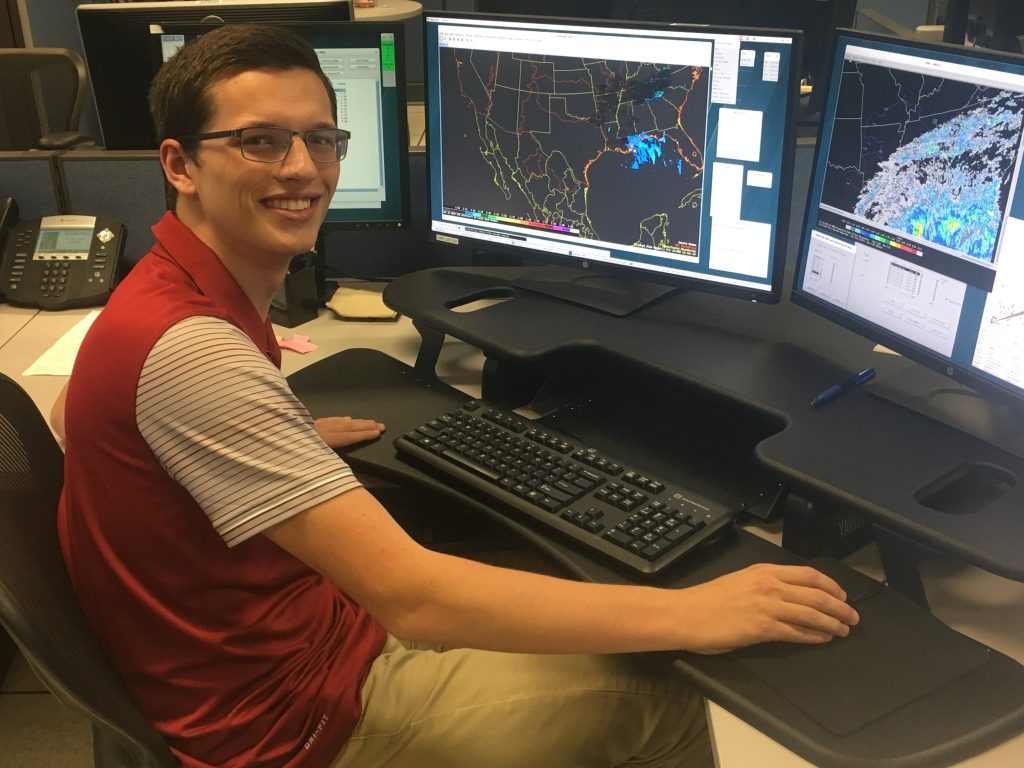
Nolan Meister, a SoM Master of Science student, worked with me, Petra Klein (OU), and a broad team of NOAA-OAR scientists to analyze observations collected during the 2019 CHEESEHEAD experiment. Nolan’s work focused on characterizing the general boundary layer environment in the complex forested region and analysis of a 2-day severe convection event on July 19-20 2019. The case study connects observation and simulation components, including an evaluation of the NSSL Warn on Forecast System.
Outcomes:
Find Nolan’s Thesis here.
Nolan contributed to the case studies that will populate over time here.
Undergraduate Research 2020-2021:
Evaluating Polarimetric Retrievals of Boundary Layer Height Using State-of-the-Art Boundary Layer Profiling
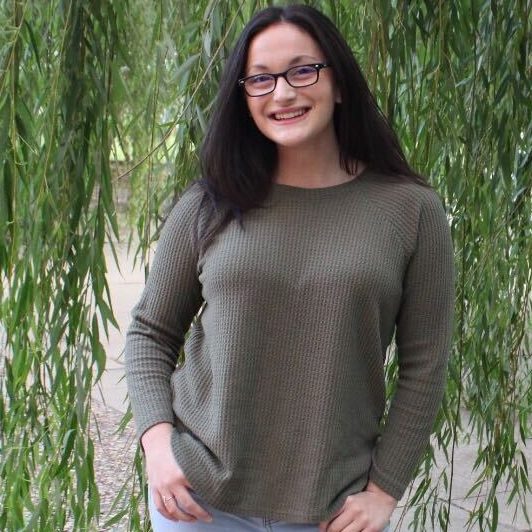
Katie Giannakopoulos
University of Oklahoma
School of Meteorology
Expected Graduation: May 2022
Major: Meteorology
Minor: Mathematics
Katie Giannakopolous worked as an undergraduate research assistant with me and Dr. Jacob Carlin (CIMMS) on a project funded by a CIMMS DDRF internal grant. This project used the CLAMPS platforms to detect boundary layer height and evaluate boundary layer height as detected from polarimetric WSR-88D radar clear air observations, extending the work of Banghoff et al. (2018) beyond synoptic observation times.
Undergraduate Research Assistant 2019-2021:
Defining the capabilities of boundary layer profiling systems for operations in the southeastern United States
Tyler Pardun
University of Oklahoma
School of Meteorology
BS Earned: May 2021
Major: Meteorology
Minor(s): Mathematics

I mentored Tyler Pardun as a CIMMS undergraduate research assistant on my VORTEX-SE grant. Tyler focuses on data exploration and verification of short-term forecast and warning operational tools using ground-based boundary layer profiler data. After his graduation, we continue to collaborate on these datasets.
Outcomes:
Find Tylers 2021 AMS Presentation here.
NWC Research Experience for Undergraduates 2021:
Pre-Convective HSLC Environment Analysis of a Supercell Using Boundary Layer Profiling Data

Dana Katelin Pawlowski
East Carolina University
Department of Geography, Planning, & the Environment
Expected Graduation: Fall 2022
Major: Applied Atmospheric Science
I acted as lead mentor on a mentor team for Dana’s REU project which built upon the research Tyler Pardun completed based on Southeast US CLAMPS observations. Dana was able to focus on a single convection mode (cellular) and a single case more in depth, and validated many of Tyler’s findings.
Outcomes:
Read Dana’s final REU paper.
NWC Research Experience for Undergraduates 2021:
Boundary Layer Depth Measurement Disparities During the Evening Transitional Period
Isaac Medina
University of Oklahoma
School of Meteorology and
School of Aviation
Expected Graduation: 2024
Major: Meteorology
Major: Aviation Management – Air Traffic Management Concentration
Minor: General Business

I served as co-mentor to Isaac alongside two CIMMS colleagues on a project comparing dual-pol radar, fuzzy-logic based CLAMPS, and UAS boundary-layer height estimates. We worked together to understand why the different methods would deviate in transition periods and what those deviations meant.
Outcomes:
Read Isaac’s final REU paper.
Graduate Research 2019-2020:
Evaluating Warn-on-Forecast System (WoFS) predictions of supercell inflow environments
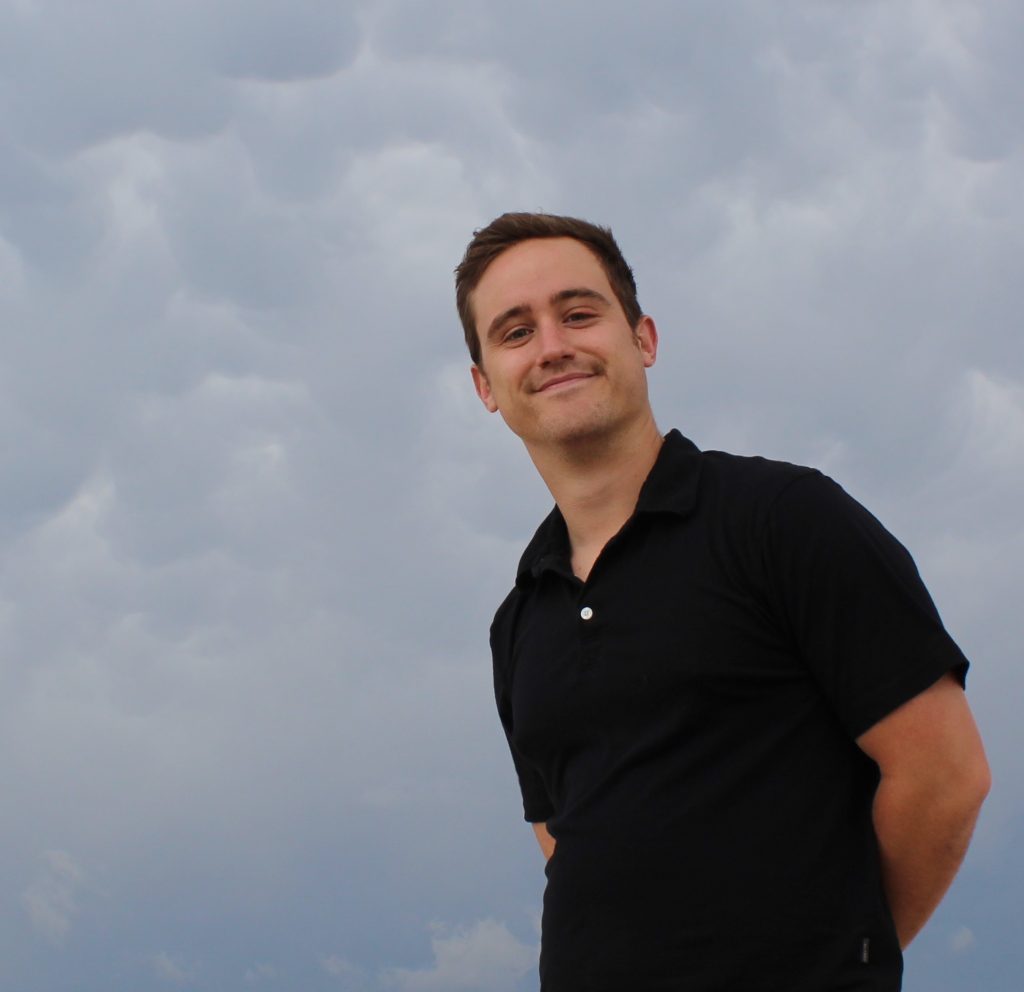
Jordan Laser
University of Oklahoma
School of Meteorology
Degree Earned: August 2020
Master of Science, Meteorology
I served as member of SoM Master of Science student Jordan Laser’s advisory team. Jordan evaluated NSSL’s WoFS ability to represent the inflow environment of supercell thunderstorms. To accomplish this, he used Doppler lidar and radiosonde observations collected during the TORUS campaign. Jordan was also advised by Dr. Patrick Skinner – CIMMS and Dr. Mike Coniglio – NSSL.
Outcomes:
Find Jordan’s AMS2020 presentation abstract here.
Find Jordan’s final thesis here.
Find Jordan’s work in published form in AMS Weather and Forecasting here.
Senior Capstone 2019-2020:
Investigation of supercell characteristics and their sensitivity to hodograph shape using idealized WRF simulations
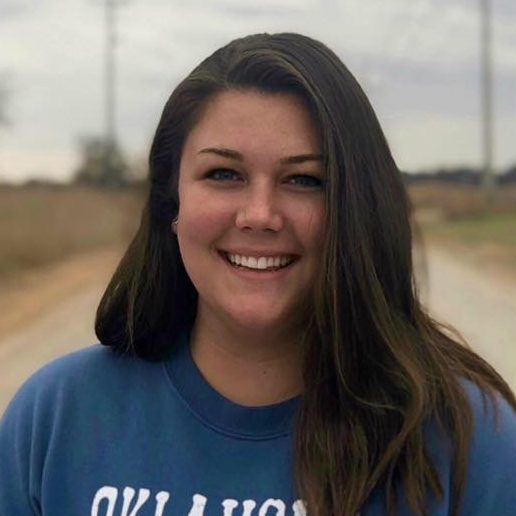
Maci Gibson
University of Oklahoma
School of Meteorology
BS Earned: May 2020
Major: Meteorology
Minor(s): Mathematics

Marisa Nuzzo
University of Oklahoma
School of Meteorology
BS Earned: May 2020
Major: Meteorology
Minor(s): Mathematics & Broadcast Journalism
I mentored Maci and Marisa on a project exploring how low-level wind characteristics are related to supercell thunderstorm dynamics and morphology. OU SoM PhD student Matthew Flournoy served as co-mentor for this project.
Outcomes:
Check out Maci and Marisa’s final capstone paper here.
Senior Capstone 2019-2020:
Utilizing Mobile Doppler Wind Lidar Observations and Idealized Modeling to Understand the Characteristics of a Density Current’s Vertical Velocity Field

James Cuellar
University of Oklahoma
School of Meteorology
BS Earned: May 2020
Major: Meteorology
Minor(s): Mathematics & GIS

Nolan Meister
University of Oklahoma
School of Meteorology
BS Earned: May 2020
Major: Meteorology
Minor(s): Communication
I mentored James and Nolan on a project using TORUS 2019 mobile lidar observations to characterize updrafts observed along thunderstorm outflow boundaries. OU SoM PhD student Dylan Reif served as co-mentor for this project.
Outcomes:
Check out James & Nolan’s AMS Student Conference 2020 abstract here.
Check out James & Nolan’s final capstone paper here.
NWC Research Experience for Undergraduates 2019:
Exploring Great Plains Nocturnal Low Level Jet Heterogeneity and Connections to Convection Initiation

Michelle Spencer
At time of REU:
Metropolitan State University of Denver
Dept. of Earth & Atmospheric Science
BS earned: December 2019
Major: Meteorology
I mentored Michelle on a project that investigates connections between Great Plains nocturnal low level jets and overnight convection initiation using PECAN observations and WRF simulations. OU SoM Professor and College of Atmospheric and Geographic Sciences Associate Dean Dr. Petra Klein acted as co-mentor during the REU program. After the summer REU ended, Michelle and I continued work on this topic exploring deeper connections between these common Great Plains phenomena while she worked toward her MS at University of Wisconsin at Milwaukee.
Outcomes:
Read Michelle’s final REU paper.
Check out Michelle’s AMS Annual 2020 presentation.